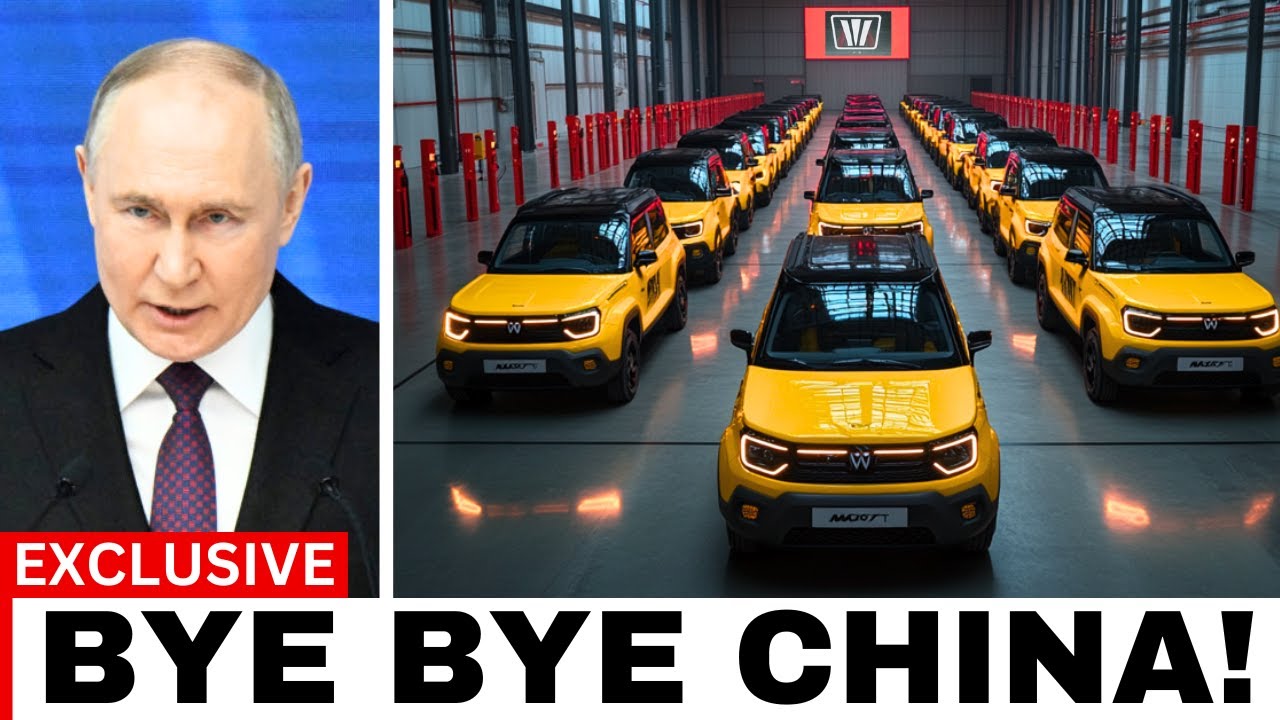Russia’s New Energy Vehicles: A Bold Bid to Reshape the Global EV Industry
In a move that has caught the attention of the global automotive industry, Russia has announced an ambitious plan to revolutionize its electric vehicle (EV) sector with a new generation of new energy vehicles (NEVs). From sleek electric crossovers to innovative battery technologies, Russia’s latest initiatives signal a determined push to compete with giants like Tesla, BYD, and Volkswagen. Backed by aggressive government policies, strategic partnerships, and a focus on domestic production, Russia aims to transform its fledgling EV market into a global powerhouse. This article explores the technologies, policies, and challenges behind Russia’s NEV ambitions and why they’re sparking both excitement and skepticism worldwide.

Russia’s EV Ambition: A Strategic Leap Forward
Russia’s announcement centers on a multifaceted strategy to boost NEV production and adoption. The centerpiece is the introduction of new electric models, including the E-Neva crossover by the Almaz-Antey consortium and the Atom electric car by the Moskvich plant, both slated for production by 2026. These vehicles are designed to compete in the premium and mid-range segments, offering advanced features like long-range batteries, smart connectivity, and autonomous driving capabilities. The government has set a target for NEVs to account for 10% of total vehicle production by 2030, equivalent to approximately 220,000 units annually, a ninefold increase from the 2,000 EVs produced in 2022.
To achieve this, Russia is rolling out a comprehensive policy framework. Subsidies for EV purchases, tax exemptions, and free parking in urban centers like Moscow and St. Petersburg are designed to stimulate demand. The government is also investing heavily in charging infrastructure, with plans to install over 70,000 charging stations by 2030. In 2023 alone, Russia expanded its network to include 558 slow and 266 fast charging stations, a significant leap from the 400 public chargers available in 2021. Additionally, Prime Minister Mikhail Mishustin approved 29 measures in 2023 to support the EV market, including subsidies for taxi and car-sharing services using EVs and revisions to insurance costs for electric vehicles.
The New Players: E-Neva, Atom, and Beyond
Russia’s NEV lineup is led by two flagship projects. The E-Neva, developed by Almaz-Antey, a defense consortium, is a C-class electric crossover unveiled at the Obukhov plant. It boasts a 500-kilometer range, a domestically developed electric motor, and a 77 kWh battery with an eight-minute fast-charge capability for an additional 100 kilometers. Production is planned for the former Toyota plant, with an annual output target of 55,000–65,000 units starting in 2026. The E-Neva’s sleek design and advanced telematics, developed with Kaspersky Laboratories, aim to appeal to both private buyers and public hire services like taxis.
The Atom, produced at the Moskvich plant, is another cornerstone of Russia’s EV strategy. This compact urban EV, set to enter serial production in late 2025, features a rear-mounted electric motor and a battery developed in Kaliningrad. Its software allows remote management via a smartphone app, making it adaptable for ride-sharing and fleet operations. Other notable models include the Lada e-Largus, a more affordable option from AvtoVAZ, and the Elecar 5E-Tigarbo, a localized electric car that completed road tests in 2023.
These vehicles reflect Russia’s focus on domestic innovation. The government is incentivizing the production of EV components, such as batteries, electric motors, and integrated circuits, to reduce reliance on foreign suppliers. A special fund supports research into charging infrastructure and battery recycling, while collaborations with companies like Rosatom and Renner aim to develop next-generation technologies like hydrogen fuel cells.
A Market in Transition
Russia’s EV market, though small, is growing rapidly. In 2024, sales of new EVs reached 18,217 units, a 27% increase from 2023, with the total number of registered EVs hitting 596,000. Chinese brands like Zeekr, BYD, and Chery dominate, accounting for over half of sales, while domestic models like the Moskvich 3e and Evolute i-Space are gaining traction. The Zeekr 001 led sales with 5,096 units in 2024, followed by the Moskvich 3e with 1,805 units. Moscow remains the epicenter of EV adoption, with 3,500 registered electric cars, though this represents just 0.09% of the city’s passenger fleet.
The government’s push for localization is reshaping the market. From 2025, public procurement will prioritize Russian-made EVs, and manufacturers like Dongfeng have established production facilities in Lipetsk Oblast. However, the market faces challenges, including high vehicle costs—starting at 3 million rubles ($30,000)—and rising customs duties, which have slowed growth in some regions like Tatarstan.
Russia’s Global Context: Competing with China and the West
Russia’s NEV ambitions come at a time of intense global competition. China, the world’s EV leader, has captured over 50% of Russia’s car market since Western automakers withdrew in 2022 following the Ukraine conflict. Brands like Zeekr and BYD offer affordable, high-quality EVs, setting a high bar for Russian manufacturers. Meanwhile, the United States and Europe are ramping up domestic EV production through policies like the Inflation Reduction Act, which invests $369 billion in clean energy, and EU-China negotiations to set minimum EV prices.
Russia’s strategy mirrors China’s in its reliance on state support and infrastructure investment but faces unique hurdles. Sanctions have limited access to global technologies, forcing Russia to lean on Chinese partners like Dongfeng and Geely. The inclusion of Moskvich and Technopolis Moscow on U.S. sanctions lists has further complicated production, raising doubts about the feasibility of projects like the E-Neva. Despite these challenges, Russia’s vast reserves of lithium, nickel, and cobalt—key EV battery components—position it as a potential player in the global supply chain.
Opportunities and Challenges
Russia’s NEV push offers significant opportunities. The expansion of charging infrastructure, projected to reach 1.53 million EVs by 2030, could make EVs more accessible, particularly in urban centers. Collaborations with energy providers for vehicle-to-grid integration and smart charging could enhance grid stability and user experience. The focus on environmental sustainability aligns with global trends, as EVs powered by renewable energy could reduce Russia’s reliance on oil and gas, which dominate its economy.
However, challenges abound. The lack of charging infrastructure in rural areas and extreme cold climates, which reduce battery performance, pose barriers to widespread adoption. High initial costs and consumer concerns about range anxiety remain significant hurdles, particularly for the mass market. Sanctions and supply chain disruptions have also delayed projects, with critics arguing that Russia’s reliance on Chinese components undermines claims of “domestic” production. For instance, the Evolute i-Space, assembled in Lipetsk, is essentially a rebranded Chinese vehicle, highlighting the gap between ambition and reality.
The Road Ahead: Can Russia Deliver?
Russia’s NEV initiative is a bold gamble to carve out a space in the global EV market. The E-Neva and Atom represent a shift from Russia’s traditional reliance on fossil fuels, signaling a commitment to sustainable transportation. Government support, including tax incentives and infrastructure investment, has driven record sales and attracted manufacturers like Chery and Volkswagen, despite their limited presence. The partnership between Mercedes-Benz and Kamaz for electric truck development and AvtoVAZ’s hybrid Lada production in 2024 further underscore Russia’s diversification efforts.
Yet skepticism persists. Analysts question whether Russia can overcome sanctions, technological gaps, and competition from China, which produces over 30% of its vehicles as EVs compared to Russia’s 2%. Past attempts, like the Lada Ellada in 2012, failed to gain traction, with only 100 units produced. The success of Russia’s NEV strategy will hinge on its ability to localize production, scale infrastructure, and deliver affordable, reliable vehicles. Projects like Electromobiles Manufacturing Rus, which aims to produce Russia’s first fully electric truck, face scrutiny due to the company’s limited experience and modest capital.
Global Implications
Russia’s NEV push has broader implications for the global EV industry. If successful, it could challenge Chinese dominance in emerging markets and leverage Russia’s raw material wealth to secure a foothold in battery production. The focus on hydrogen fuel cells and post-lithium batteries, as outlined in the 2030 Concept, positions Russia as a potential innovator in next-generation technologies. However, failure to deliver could reinforce China’s grip on Russia’s market and limit Russia’s influence in the global energy transition.
For consumers, Russia’s NEVs promise greater choice and affordability, particularly in urban areas where infrastructure is expanding. The government’s “green zones” in cities like St. Petersburg, accessible only to EVs, signal a cultural shift toward electric mobility. Globally, Russia’s efforts could inspire other resource-rich nations to invest in EVs, diversifying the market and accelerating the shift from internal combustion engines.
Conclusion
Russia’s announcement of new energy vehicles is more than a domestic policy—it’s a bold challenge to the global EV industry. With models like the E-Neva and Atom, supported by aggressive subsidies and infrastructure growth, Russia is betting on a future where it’s not just an oil giant but a leader in sustainable transport. The road ahead is fraught with challenges, from sanctions to technological hurdles, but the potential rewards are immense. As Russia races to catch up with China and the West, its NEV revolution is a story of ambition, innovation, and resilience—one that’s captivating the world and redefining the EV landscape.





